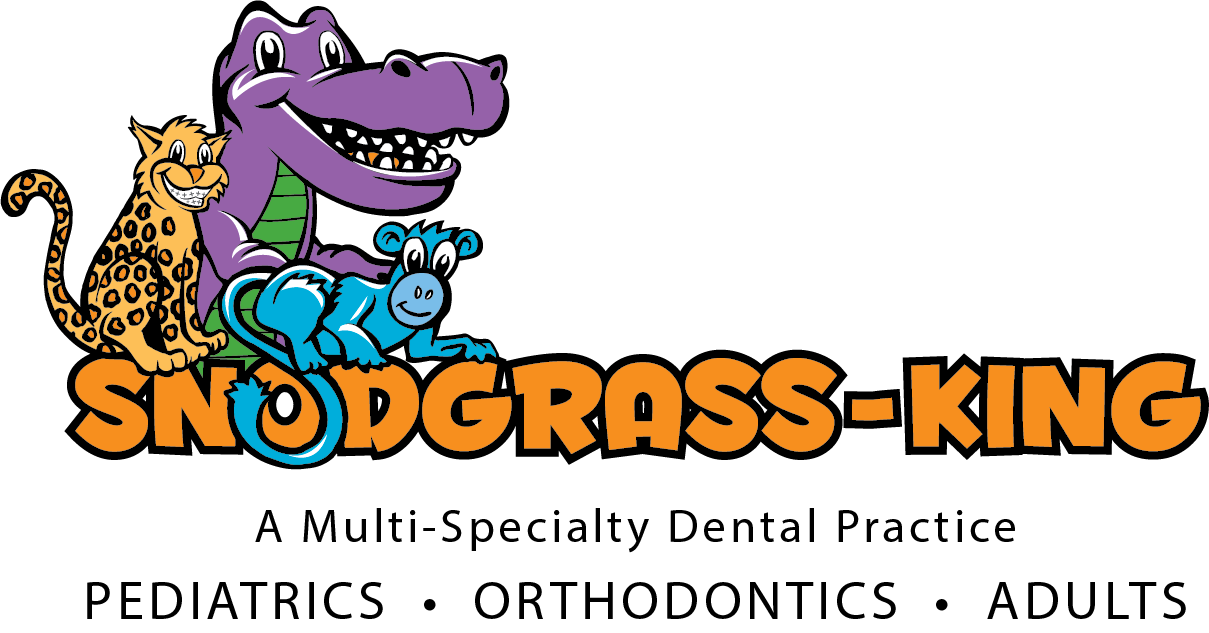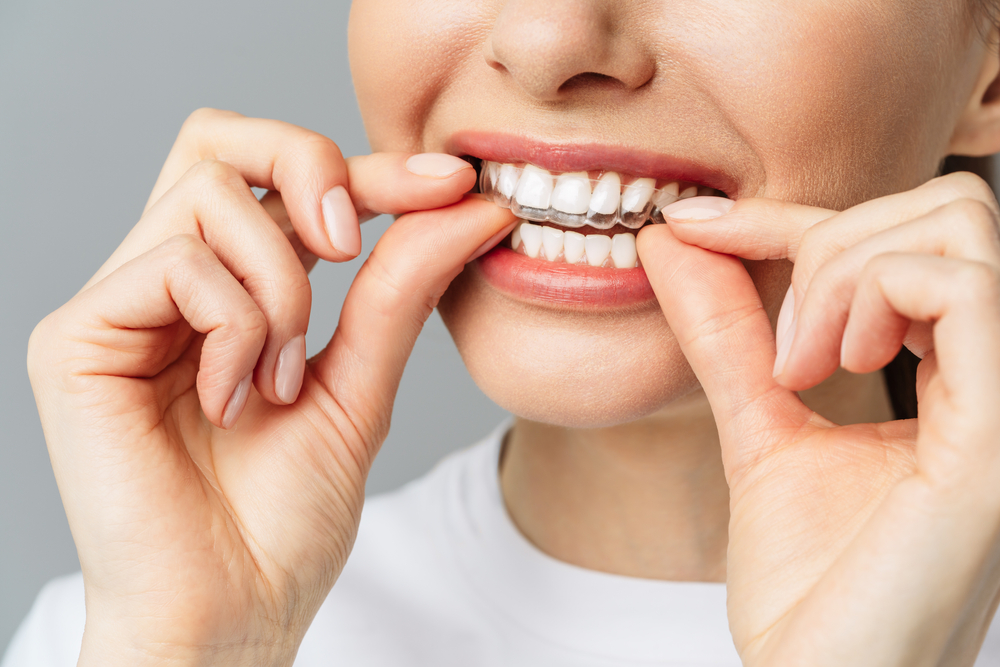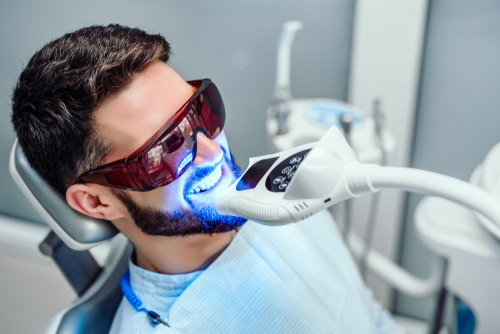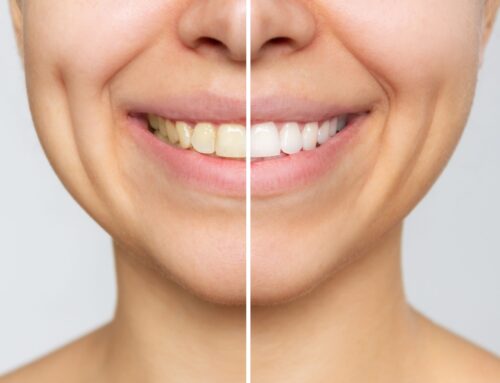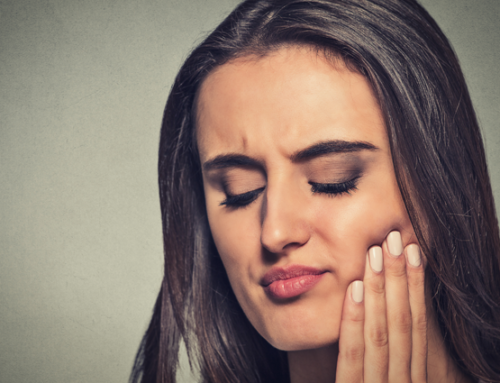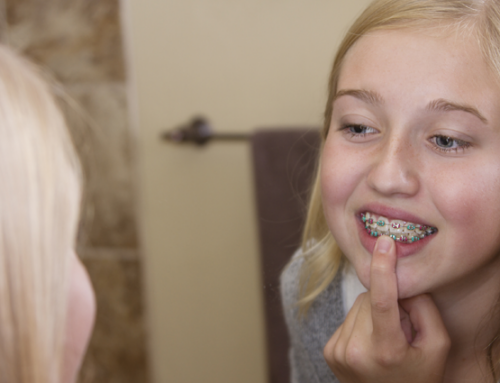
Nashville Teeth Whitening
Is a smile, or lack thereof, the first thing that you notice on a person? If so, do you flaunt or worry about your own smile? Everyone’s smile is unique and worth showing. Don’t let a dingy or stained set of chompers keep you from smiling. Consider an easy solution: teeth whitening!
At Snodgrass-King Dental we offer in-office teeth whitening treatments. To help you get a better idea as to what teeth whitening is all about, we want to share with you our insights. Keep reading to learn about all things teeth whitening, from in-office treatment to take-home trays to some essential teeth whitening facts we encourage all our patients to know about!
In-Office Teeth Whitening
In-office whitening treatments may be stronger than over the counter products. Because they may be stronger, they may lead to whiter teeth faster, while in a safe and controlled environment. Bleaching is low-cost, quick, and definitely worth a try if you’re trying to brighten your smile quickly.
Here are two common in-office teeth whitening procedures:
1. Boost – Opalescence™ Boost™ is a very popular and easy whitening procedure that has become common in dental offices. During this whitening procedure, a dentist covers your gums with a protective gel to prevent irritation. After that, Boost™ gel is gently brushed onto your teeth, and you wait. The full procedure typically takes just one hour, and results are visible after just one session.
2. Zoom – Another popular alternative, Zoom, works in a very similar way. For this procedure, a dentist also applies a gel to your teeth, although the difference is that Zoom utilizes a special light to help the gel penetrate through stains. Although professional teeth bleaching costs more than at-home options, Zoom is relatively affordable, at around $500. Keep in mind that most insurance does not cover cosmetic dentistry.
Take-Home Teeth Whitening Trays
Is the whitening toothpaste just not making a difference? Or, are you sick of buying expensive whitening strips and hoping they stay in place while you go about your day? Custom bleaching trays are a great solution to getting that whiter, brighter smile from the comfort of your own home.
A quick trip to the dentist allows for impressions to be made of your teeth, and in 48 hours or less, your bleaching trays are ready! The trays also come with a special bleaching agent that is to be placed in the trays and worn. Once you reach your desired level of whiteness, only occasional treatment should be necessary.
At-Home Whitening
Want to attempt something more natural? Some swear by pantry concoctions such as baking soda and lemon juice formed into a paste. Some even use strawberries, salt, & baking soda scrubs or even the new fad – oil pulling. Effective whitening solutions, who knows? What is for certain is that getting your teeth whitening professionally definitely works. But, here are some at-home teeth whitening products if you prefer at-home whitening.
Whitening Toothpaste – A very common household item these days, whitening toothpaste is used to consistently whiten your teeth over time. Although a single session of brushing probably won’t make a noticeable difference, regular use does.
Additionally, this kind of toothpaste can be great in combination with other tooth whitening treatments and helps maintain results. Keep in mind, however, that excessive use of whitening toothpaste can hurt sensitive teeth. It is always best to consult your dentist before using a new dental product.
Whitening Strips – A staple of every drug store these days, whitening strips can be found in almost every dental care aisle. Although this is a lower-cost alternative to in-office procedures, whitening strips are less effective and take many sessions in order to deliver visible results. Additionally, since the treatment comes in the form of strips, it’s easy to accidentally leave a few spots without coverage, resulting in uneven whitening.
4 Facts about Teeth Whitening To Consider
Why Do Teeth Stain?
Before you dive into the process of and facts about teeth whitening, let’s talk about the basics first. Most adult teeth do incur stains over time, and this doesn’t necessarily mean that you’re bad at taking care of your teeth. It may be from tea, coffee, tobacco, and other herbs.
Overall, there are three types of teeth stains:
Extrinsic Teeth Stains – One of the most common types of teeth stain, extrinsic ones are just what you might consider “surface stains.” They occur when pigmented particles from food or drink build up in the protective film around our teeth. Common culprits include tea, coffee, wine, and other substances that tend to leave stains.
Intrinsic Teeth Stains – These are stains that live below the surface of your teeth. Unlike extrinsic stains, these are not only caused by food stains per se. Excessive fluorine, certain medications, and dental trauma are all likely causes of intrinsic stains as well.
Age-Related Teeth Stains – As we age, our teeth naturally start wearing down, revealing some of the underlying yellow dentin. This, combined with food stains, causes our teeth to appear more yellow over time.
Fact #1 – Believe It Or Not, Stains Are Normal
Don’t panic too much if you start noticing that your teeth are looking a little more yellow than you’d like. According to a 2007 survey, a whopping “80% of Americans aged 18 and 49 want whiter teeth.”
The best thing to do is to make sure you’re brushing and flossing your teeth on a regular basis. You can also consult your dentist regarding possible teeth whitening procedures. They can tell you whether you have any dental conditions which would make teeth whitening a bad fit for you. Your dentist may even be able to recommend a product or procedure for your needs.
Fact #2 – Not All Teeth Whitening Products Are The Same
There are a variety of ways to whiten your teeth and improve your smile these days. Generally, these include gel or whitening liquid, a light/laser, a whitening tray, or whitening strips. It’s important to note that in-office procedures tend to be a lot faster and effective than at-home treatments.
Fact #3 – Teeth Whitening Is Temporary
As we mentioned earlier, extrinsic teeth stains are a very common side effect of consuming large amounts of coffee, tea, wine, and other highly pigmented food and drink. Since this is largely a habitual problem, the stain can come back depending on how well you maintain results after your whitening treatment. Expect results to last anywhere between 3 months to a few years. Brushing and flossing regularly, as well as avoiding drinks that can stain your teeth will help prolong the results of whitening.
Fact #4 – Professional Teeth Whitening Is The Safest Option
Yes, there are a variety of at-home teeth whitening options these days. Keep in mind that some of these treatments may irritate or otherwise cause damage to your teeth. It is always best to be supervised by your dentist when receiving teeth whitening procedures.
Your dentist will typically take a look at your teeth beforehand to ensure that everything looks good and that you won’t encounter any problems with the product.
Furthermore, your dentist will typically have your dental history and will know if your teeth are too sensitive for whitening.
Safety aside, professional whitening is simply a lot more effective. Your dentist can provide you with a teeth bleaching treatment that is fast and has an immediate and noticeable effect.
Teeth Whitening Warnings
It is always a great idea to discuss new at-home dental methods like teeth whitening with your dentist prior to trying any over the counter products. Everyone’s teeth respond differently to bleaching. It is important to determine if your teeth will respond positively to bleaching before making a large investment. In addition, it is important to follow the directions on a product’s packaging.
- If you have any rotted or decaying teeth, the bleaching product may literally strike a nerve and cause pain and further damage. Have your teeth checked regularly for changes.
- Some people ignore instructions and leave whiteners like bleach strips on too long. This may lead to more sensitive teeth, as well as tooth discoloration.
- Your teeth’s level of whiteness may be different than someone else’s pearly whites. Don’t push the limit on this. There is such a thing as too white of teeth.
- Pregnant or nursing? It’s best to wait to whiten your teeth.
- If you want teeth whitening trays, get them custom-fit. Nothing is worse than buying one size fits all trays and doing damage to your gums or missing spots on your teeth due to ill-fitting trays.
- Teeth whitening products should not be used on synthetic teeth because they tend to color differently than natural teeth.
Teeth Whitening FAQs
And, to make sure that you’re extra prepared to tackle your dental health, here are a few answers to common questions.
How To Whiten Teeth Naturally?
Unfortunately, there’s no all-natural fix that can whiten your teeth over a short period of time. Having said that, a good diet and regular brushing are great ways to maintain healthy teeth and prevent stains. Remember to reduce your consumption of tea and wine, or brush immediately after consuming these things to keep your teeth from staining.
Aside from this, consult with your doctor regarding other easy ways to keep your teeth white at home. It’s best not to cook up unverified home remedies without consulting with a professional beforehand. Remember that lemon juice and other “all-natural” ingredients can still hurt your teeth.
Best Way To Whiten Teeth?
Hands down, the most effective way to whiten teeth is at a dentist’s office. They will typically use a professional whitening treatment such as Boost or Zoom, and ensure that your gums are protected during the whitening. On a daily basis, however, whitening toothpaste can be a good way to keep your teeth bright and stain-free. Ask your dentist for a recommendation regarding toothpaste that can help prevent stains.
How To Whiten Teeth Instantly?
Although “instantly” might be an impossible task, 1 hour is definitely doable. A dentist can use a professional bleaching solution or laser technology to remove many stains within just one session. As we mentioned before, Zoom and Boost are two treatments that can be performed in-office and deliver great results.
Keep in mind, even an in-office visit may not get rid of all of your stains in a single session if you need significant stain removal. One or two sessions, however, is enough for most people to see a major difference in their pearly whites.
How Often Can You Whiten Your Teeth?
This is a great question and one which heavily depends on what you’re using for whitening. For example, many whitening toothpastes can be used on a daily basis. Make sure to check the label and follow the instructions, since toothpaste can vary in harshness. Professional grade whitening treatments are a lot stronger, and are usually not recommended more than once or twice a year.
Whitening strips have a completely different timeline as well. Most products have you apply the strips daily for 12-20 days. Application varies by brand, so you should always follow the directions on the back of the product. Overall, the best thing to do is to check with your dentist to see how often your teeth can handle whitening treatments.
Looking for a Dentist in Tennessee for Whitening Treatments?
Here at Snodgrass-King Dental, we provide services for the whole family, and yes, that includes you! We offer a variety of dental procedures here at our office – including most cosmetic procedures. So if you’re interested in teeth bleaching service, don’t hesitate to reach out to us.
We currently offer services at a variety of locations throughout Middle Tennessee (Mt. Juliet, Murfreesboro, Franklin, and Spring Hill). Simply go online or give us a call to set up an appointment. Our website features a convenient online form that allows you to request an appointment without even picking up the phone.
